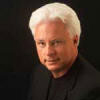To love what you do, and feel that it matters.
Could anything be more fun?
Katherine Graham
Churchill said “A fanatic is someone who won’t change their mind and can’t change the subject.” That’s how it began in 1979 when some guys in Connecticut decided to try a statewide all-sports TV network on a new channel called “Entertainment and Sports Programming Network.” Today as summer wanes, college and professional football are already in motion and one of America’s “cult brands” is stirring for its thirty-fifth season. In 2014 ESPN is arguably the most successful name in network television history. The world has applauded it while some of its personalities are as celebrated as the superstar athletes they cover. Building on names from the network’s beginning, Dan Patrick, Chris (he…could…go…all…the…way) Berman, Linda Cohn, Jim Rome, Erin Andrews, and many more, ESPN owns the image of all things “sports television.”
What many may never really know is the prosaic reality of the network’s beginning, how it shouldered its way to the top, and how its leadership saw the true cartography of American sports. As an example, few know how ESPN Magazine came about when John Papanek appealed to Michael Eisner to frontally assault Sports Illustrated. Eisner raised the money and waved the green flag with sentiments that pretty closely reflect the brio in Bristol. Eisner*: “Ted Turner started a sports channel, CNN Sports, which really pissed me off. And as only Ted Turner could say, ‘I’m going to bury you guys…ESPN is s–t. I know cable, you guys don’t.’ So I said to myself, ‘don’t get angry, get even.’ I knew our strategic planning people didn’t want to go into magazines but I walked into Disney the next day and said, ‘we’re going to kick Time Warner’s ass and bury Sports Illustrated while we’re at it.’ I called Turner that afternoon and told him ‘Sports Illustrated is old and boring. Ted, you’ve got six hours to get out of town.'” So, on March 11th 1998 ESPN’s magazine was born. Eisner got pushback for his concept and its name. It was dictated the magazine would be called “ESPN The Magazine,” prompting ESPN’s Greg Easterbrook to quip, so we live on “Earth The Planet?”
Today ESPN’s 64 acre campus in Bristol, Connecticut is backdrop for a legion of stories, rivalries, scandals, and triumphs. From the unknown visionaries who devised the whacky idea of an all-sports TV network to the global celebrities who’ve walked the halls and been a link in the long chain that is ESPN years hence.
But what’s at the core of ESPN’s 35 year celebrity; what has propelled ratings and unceasing American adoration? From the outset ESPN seemed to recognize above all, Sports TV is about emotion. Thus where others might have focused on content singularly centered on play-by-play and an avalanche of player and team statistics, ESPN knew it had to be about the ethos of celebrating sports.
Cult brands can’t be ordered or schematically drawn; instead they grow out of instinct where creative affluence meets fanatical passion until the magical tipping-point occurs: when consumers are more eager to consume than even the brand is eager to purvey. It’s what Starbucks, Apple, and KBCO knew in the Eighties; in order to become a cult brand we must necessarily be in the business of meeting needs.
*For a good read: ESPN Miller & Shales, Little Brown
Sincerely,
Tim Moore
Managing Partner
Audience Development Group
